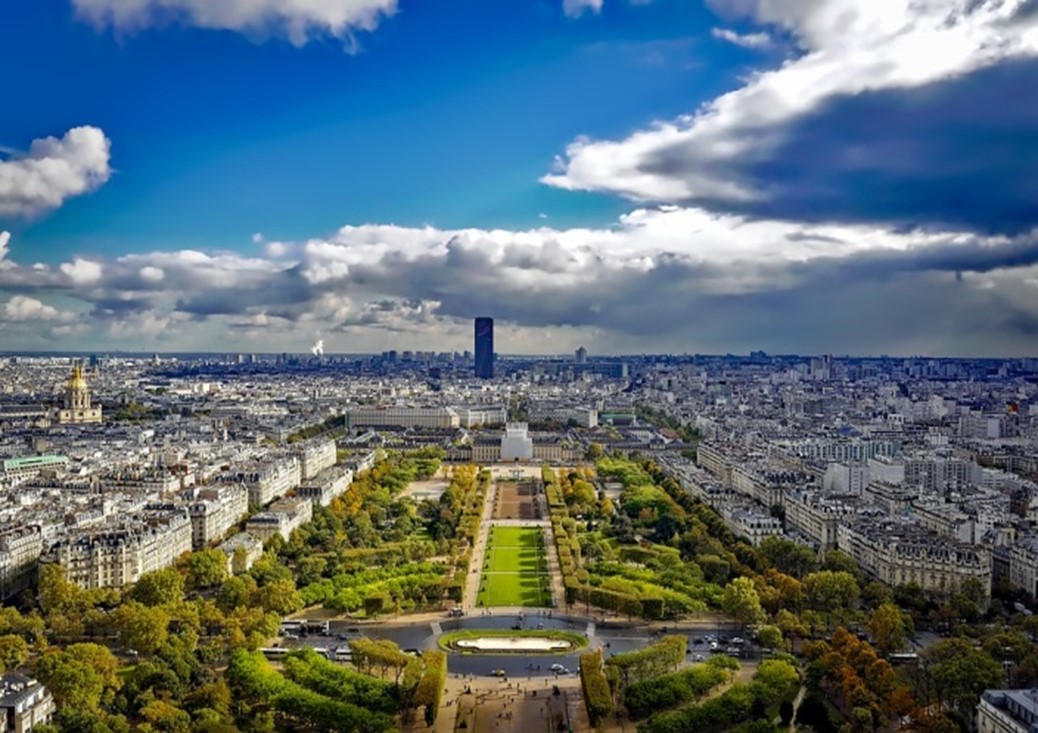CHAPTERS
Navigate to chapter
► Chapter One: Paris Overview
► Chapter Two: Travel Essentials
► Chapter Three: Getting In and Around Paris
► Chapter Four: Hotels and Accommodations
► Chapter Five: Fine Dining
► Chapter Six: Shopping in Paris
► Chapter Seven: Tourist Spots in Paris
► Chapter Eight: Interacting with Paris
► Chapter Nine: Nightlife in Paris
► Chapter Ten: Off – Beaten Path in Paris
Chapter One: Paris Overview

Before your plane lands on one of the most must-see cities in the world, it is essential to know intricate details of what you’re about to deal with. Paris is quite a populated city in France, and if it is your first time to travel here, you might want to consider discovering facts about this awesome place, so that you know what to expect before you go about in your itinerary and to avoid getting into trouble. In this chapter, you will be provided with an overview of Paris – its city, language, culture, people, and history.
If you have enough knowledge about these things, you will not just enjoy and appreciate the city but also get to be prepared for a different kind of adventure – French style!
Paris is strategically located in the central northern region of France surrounded by two islands; the Île Saint-Louis and Île de la Cité . The city is generally flat and it is spread near one of the oldest river banks in the world called La Manche or the English Channel.
Paris is widely known as the “city of light,” for two reasons; first, as mentioned earlier, Parisians who lived centuries ago were part of a European revolution called the Age of Enlightenment. This was the time when Europeans particularly intellectuals, and scholars as well as artists and philosophers began to advance a certain sense of ideals such as liberation, justice, religion, equality etc. that would later change and affect the way they live their lives and that of the world. The second main reason is simply because Paris was one of the first cities in the world to adapt gas street lighting that illuminated the different streets of the city in 1860.
In the past few years, Paris continues to become the central district for business and culture in France and in Europe. The city adapted to several economic changes and continues to become one of the key cities in the 21st century.
Paris is also regarded as one of the richest regions in all of Europe. It is still the center for trade, fashion, art, commerce and transportation that connects nearby cities of France.
The city also participated in major sporting events such as the Summer Olympics, FIFA World Cup, Rugby World Cup, and the famous Tour de France. The city is currently bidding to host the 2024 Summer Olympics.
Before Paris became the hub for artists and philosophers alike, and before it became the city that it is today it had gone through different phases and major changes; let’s have a quick look at what went down in its history.
- 3rd century B.C.:A tribe of Celtic fishermen, also known as the Parisii acquired an area near the fertile river bank called the Seine River.
- 52 B.C.:Julius Ceasar acquired the city, and later became part of the Roman Empire, the territory was known as Gaul.
- 4th – 9th centuries:The territory was seized by Clovis I, and renamed it Lutetia Paris.
- 1163:Notre Dame Cathedral began construction during the era of gothic architecture. The cathedral was finished after almost two centuries.
- 12th and 13th century:It started becoming as the medieval city; construction of famous sites such as the Sainte -Chapelle cathedral, Louvre, and Sorbonne begins.
- Late 14th century:the city’s population was struck by a plague called the Black Death.
- Late 15th century: The age of rebirth or The Renaissance begins. The city was eventually became a center for art, architecture, technology and science.
- Late 16th century: there were a lot of religious conflicts particularly between the Catholics and Protestants that lead to the massacre of 3000 Protestants known as the St. Bartholomew’s Day massacre.
- 1643: 5 year old Louis XIV, becomes the King of France. During his rule, the Versailles was built and France became powerful and prosperous.
- 1774: King Louis XVI come of age and officially ascended the throne. He then married Marie Antoinette, the daughter of an Austrian empress.
- 1792: The fall of King Louis XVI’s monarchy, and the first French republic was established. The King and his wife are guillotined after being accused of extensive decadence and indifference to its people.
- 1793-1799: The “reign of terror” and chaos took place. A new calendar was formed and religion was banned.
- 1799: General Napoleon Bonaparte aimed to stabilize the chaotic government, and later became emperor in 1804. He then colonized North Africa during his time, but power lead him astray. He was later defeated in 1815.
- Mid-19th century: Paris began renovating its city by re-constructing boulevards and replacing its sewage system under the Napoleon III.
- 1870: After being defeated by the Prussians, the third republic was established and the democratic institutions began. The era of impressionism made its mark in the genre of arts. It was the beginning of Paris’ golden age in artistic feats.
Continue Reading…
Want to read the entire thing?

